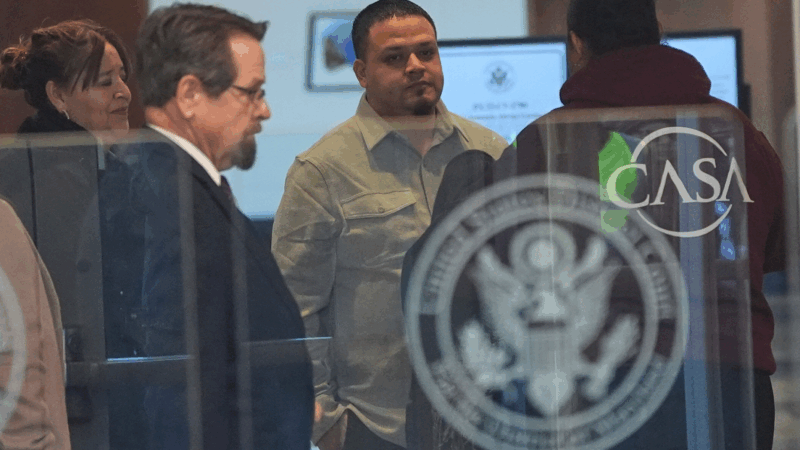Reverse Integration In A Birmingham School
 Birmingham — Birmingham was at the heart of the Civil Rights Movement, a major front in the battles that ended legal
Birmingham — Birmingham was at the heart of the Civil Rights Movement, a major front in the battles that ended legal
segregation. When the schools were integrated, white people fled the city, taking resources and other
advantages with them. That continues today, but about two dozen families are bucking the trend and trying to reverse the
process. WBHM’s Southern Education Desk reporter Dan Carsen has the story:
Birmingham’s public schools are 95 percent black and 90 percent on free or reduced lunch. The system has been under state control since June and has been hemorrhaging students for decades. And at this point, it’s certainly not just white flight: many poor black families do
what they can to enroll their kids elsewhere. To put it mildly, Birmingham schools have a stigma.
So it was unusual when Laura Kate Whitney enrolled her four-year-old, Grey, in pre-K at Birmingham’s
Avondale Elementary.
“Our neighborhood school hosted an open house, and we were completely shocked,
in a good way, as to what we saw,” says Whitney.
She and her husband are white middle-class professionals and part of a group of two dozen similar
families who are not buying the conventional tradeoff — that if you live within city limits and have
means, you send your kids to private school, period.
Whitney’s friend Elizabeth Brantley also enrolled her four-year-old at Avondale, which last year was four
percent white. But Brantley grew up in nearby Mountain Brook, one of the whitest and wealthiest communities in
America. Her impressions of Avondale might come as a surprise:
“The minute we walked in, we were like, ‘this is just a normal school. This feels like
the kind of school that I went to when I was little.'”
These parents want convenience and higher property values, but they also really believe in diversity.
Whitney says she’s not concerned with her child being in a place where he looks different from the
other kids.
“I feel like at this age, they don’t really see color,” she says. “They go straight to playing
together, and learning about each other and talking and sharing snacks. I want him to have
those types of experiences. I mean, we live in a city that is extremely diverse.”

Researchers say in most cases of school gentrification, which is relatively rare, wealthier people move
into a newly desirable neighborhood, and the school’s demographics follow suit. But the area around
Avondale is already white and middle class. Unrelated to that, it’s actually one of the better schools in
the system. Even so, Avondale parent Katrisa Larry welcomes the new families.
“I love it,” she says emphatically. “We need them, most definitely.”
White students bring more fiscal resources, parental involvement, and subconsciously, higher
expectations, say researchers. And according to Tondra Loder-Jackson, Associate Director of the Center for Urban
Education at the University of Alabama at Birmingham, integrated schools confer many other benefits.
Summarizing a body of research, she says, “White graduates from those schools believe that they’re more open-minded
about race and less likely to stereotype. The black graduates, they’re more confident about
competing with whites, and they’re also not as likely to see whites as being categorically racist.”
But the white parents coming to Avondale aren’t counting on a love-fest. One possible stumbling block is that inner-city schools tend to be
more authoritarian, more “old-school,” relying on teacher-centered models of instruction as opposed to more progressive
methods favored by many middle-class parents, methods that involve kids initiating more of their learning.
Jennifer Stillman, a research analyst for the New York City Department of Education, just published a
book on school gentrification. She offers a warning:
“In America, we often try to sort of talk about how much we value diversity. But
when we talk about it, we sort of speak of it as in, ‘We’re all the same, and we just have to get
over our superficial differences.’ But people actually can be very different. And it can be
very uncomfortable to have this clash of parenting values.”
She and Loder-Jackson point out that it’s the middle-class “integrators” who have a choice — the families
who’ve already been in the community for a while usually don’t have the means to leave. If the new parents are
unhappy, Stillman says, the gentrifying group almost always falls apart and the kids go elsewhere.
But Stillman, who lives New York’s Harlem, respects the parents who do stick it out.
“Being an urban educator, I was extremely conflicted, and yet I couldn’t bring myself
to do it,” she admits. “I definitely have admiration for people who are out there trying to make
integration a reality.”
But parent Laura Kate Whitney is optimistic:
“It’s so funny that our kids can be the bridges that bring us together, and maybe
spread this throughout the city.”
Despite her good intentions, she acknowledges the next few months will be critical in shaping the future
at Avondale, and possibly at other even-more-challenging schools in this civil-rights crucible.

Myanmar is set to hold phased elections. Here’s why they’re being called a ‘sham’
Myanmar's military rulers are holding a general election in phases starting Dec. 28 amid the country's civil war. The head of the U.N. says the vote will be anything but free and fair.
Judge to hold hearing on whether Kilmar Abrego Garcia is being vindictively prosecuted
A federal judge this week canceled the trial of Kilmar Abrego Garcia, and scheduled a hearing on whether the prosecution is being vindictive in pursuing a human smuggling case against him.
Thailand and Cambodia sign new ceasefire agreement to end border fighting
In addition to ending fighting, the agreement calls for no further military movements by either side and no violations of either side's airspace for military purposes.
Top Instagram reels from Goats and Soda in 2025: Plumpy’Nut, aid cuts, soccer grannies
Our most-viewed Instagram videos include reports from a Rhode Island factory that makes special food for malnourished children and from a tournament for soccer-playing "grannies."
Should the U.S. model its vaccine policy on Denmark’s? Experts say we’re nothing alike
The Trump administration wants to revamp U.S. childhood vaccination recommendations to align with some other peer nations, including one tiny country in northern Europe.
Marijuana rescheduling would bring some immediate changes, but others will take time
President Trump set the process in motion to ease federal restrictions on marijuana. But his order doesn't automatically revoke laws targeting marijuana, which remains illegal to transport over state lines.







